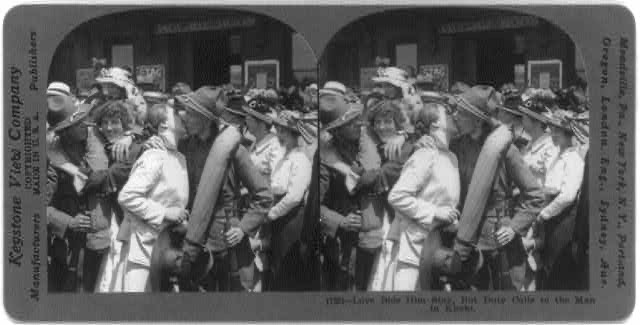
This is Veterans Day. It is celebrated each year on November 11th. Great Britain, Australia, and Canada all commemorate the armistice that went into effect on November 11, 1918, which ended the fighting between the Allies and Germany. Today I will share information on World War War I — we Americans have called it Veterans Day ever since Congress passed a bill designating Armistice Day as that in 1954 as recognition of all those who have served in the military.

There is a very good FamilySearch Timeline for researching the events and the soldiers of World War I, from 1914-1918. Over two million men were drafted to fight, and in the course of the war there were over four million US troops involved. Worldwide, it is estimated that this war resulted in thirty-seven million casualties and more than sixteen million military and civilian deaths.
The timeline above touches on the role of African Americans in that war, but the National Archives has even more information and photographs on African Americans in the Military during World War I. Resources include a website from the University of South Carolina relating to soldiers from the South in the journey of Black North Carolinians (BNC)—as units and individual soldiers—from induction to demobilization.
A newspaper called Trench and Camp was produced by the The National War Work Council for the American military personnel during World War I. The first issue appeared in October 1917, and there were 32 issues published weekly for military posts across the country.

These were issued in cooperation with the nearby city newspapers. In Augusta, Georgia, the Augusta Herald produced local content for the Camp Hancock edition. This Camp was the site of Georgia’s first outbreak of the “Spanish flu” in September 1918, and was reported by Trench and Camp. Unfortunately, even with daily health inspections and the closure of buildings used for indoor gatherings (libraries, theaters, etc.), Camp Hancock still had over 7,000 cases of Influenza, and five hundred deaths. The last issue of the Camp Hancock newspaper was on February 5, 1919, just before the Camp closed.
American women, though not allowed to serve at the front, also served during WWI in various capacities – nurses, ambulance drivers, switchboard operators (“Hello Girls”), translators, typists, and more. In March 1917, the U. S. Navy began to recruit women into the Naval Coast Defense Reserve where they would be “utilized as radio operators, stenographers, nurses, messengers, chauffeurs, etc. and in other capacities in the industrial line.” Read more about these Navy and Marine yeomen in this National Archives Prologue Fall 2006 issue.
Read more about the participation of women, including African American women, in this war, on the National WWI Museum and Memorial site — on the Homefront, in the medical field (Marie Curie trained x-ray technicians), and even as soldiers in the countries of Russia, Bulgaria, Romania and Serbia. This museum in Kansas City, Missouri, is one of the most interesting and moving museums I have ever visited. If WWI interests you, do yourself a favor and go to Kansas City to visit it.
© E. Lee Eltzroth and Hunting & Gathering, 2022. Unauthorized use and/or duplication of this material without written permission from this blog’s author is prohibited. The piece can be re-blogged, and excerpts and links may be used, provided that full and clear credit is given to E. Lee Eltzroth and Hunting & Gathering, with appropriate and specific direction to the original content.
One comment